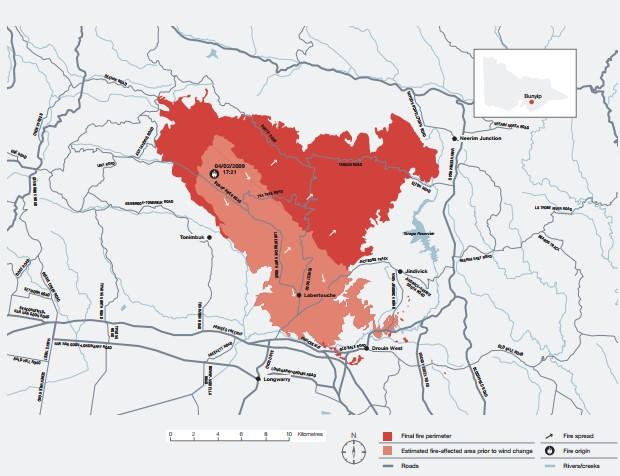
PUBLICATIONS
Published works

Disasters and economic resilience: the effects of the Black Saturday bushfires on individual income
| Title | Disasters and economic resilience: the effects of the Black Saturday bushfires on individual income |
| Publication Type | Report |
| Year of Publication | 2020 |
| Authors | Ulubasoglu, M, Onder, Y |
| Document Number | 580 |
| Date Published | 06/2020 |
| Institution | Bushfire and Natural Hazards CRC |
| City | Melbourne |
| Report Number | 580 |
| Keywords | Black Saturday, bushfires, disaster resilience, economic resilience, income |
| Abstract | In an era when the reality of climate change is creating an uncertain future, it is imperative to consider the lasting impact this will have on Australia, which is historically prone to natural disasters. The increased possibility of more frequent and intense natural disasters present a number of issues for Australians, ranging from the impact on vulnerable communities to broader economic consequences. In an effort to tackle this global phenomenon at a local level, we must turn our attention towards not only the actions required to support our businesses and communities but also to ensuring Australia is ready to adapt and become more economically disaster resilient in an ever changing environment. The urgency and delicacy of the matter is exacerbated when we consider that the average annual total economic cost of natural disasters in Australia is forecast to reach $39 billion per year by 2050 (Deloitte Access Economics, 2017) and that fiscal constraints will be imposed on government disaster expenditure due to Australia’s aging population. When a natural disaster strikes, the damages incurred are readily assessable in the immediate aftermath of the disaster. While this information is vital to the economic dimension of disaster resilience policy, it provides little integrity to analysing the direct impact such disasters have on the Australian people and, more specifically, communities and workforces that are more vulnerable to disaster. To that end, the Disasters and Economic Resilience: The Effects of the Black Saturday Bushfires on Individual Income – A Case Study explores the impact of the Black Saturday bushfires (BSBs) on the income trajectory of individuals in the labour force and residents of the disaster-hit Statistical Area-2s (SA2s). These areas are depicted in red and orange in FIGURE 1. The 2009 Victorian Black Saturday bushfires were some of the worst bushfire conditions ever recorded globally; equivalent to 1500 of the atom bombs dropped on Hiroshima going off (SMH, 2009). One hundred and seventy-three people died; over 2,100 houses and 3,500 structures were destroyed, and thousands more suffered damage (Parliament of Victoria, 2010). The total area destroyed was around 400,000 hectares (CFA, 2009). The toll was estimated to be $3.1 billion in tangible damages and $3.9 billion in intangible costs (Deloitte Access Economics, 2016). To the best of our knowledge, this study is the first in the economics literature to examine the impact of a bushfire on individual income, considering demographic and sectoral heterogeneities at very fine units. The report makes a unique assessment of economic resilience at an individual level (measured through changes in the income stream), and explores the effects of disaster-induced economic shocks transmitted to individuals through income-earning channels. In turn, this provides a deeper understanding of how income costs of disasters are borne by different areas of the workforce and assists policymakers in understanding the socioeconomics of natural disasters to better formulate public policies. In an effort to assist policymakers contextualise our assessment at a broader social and economic level, this report amplifies the socioeconomic and disaster-resilience profiles of the disaster hit SA2s. The findings of the report provide a distinctive variation from research to date by focusing on the way disasters such as the BSB affect individuals within a particular workforce and community, as well as their ability to economically cope with the ongoing effects of the disaster. The report attempts to pinpoint the income effects observed in the BSB by using a difference-in-differences modelling approach. This approach compares the income changes of individuals living in the disaster-hit SA2s (treatment group) with those neighbouring SA2s that were not directly hit by the bushfires (control group). Because of their comparability, it is the control group that provides us with the income path that would have occurred for disaster-hit residents that were reported to be in the labour force in 2006, had the bushfires not happened, and thus enables us to compute any income deviations (losses or gains) arising from the bushfires. The report utilises the Australian Census Longitudinal Dataset (ACLD)[1], which provides a unique opportunity to robustly examine the bushfire’s impacts across a longer timeframe (across 2006, 2011 and 2016) and across multiple dimensions (demographic and economic). All results we report are net results, post any disaster relief and recovery efforts; are relative to our baseline year (2006); and are compared to our control group. We define short-term results as changes over 2006–11, and medium-term results as changes over 2006–16. Our framework was developed to capture income effects following the bushfires. Data limitations impede our ability to confirm some of the assumptions of our modelling approach, but we have taken a number of steps to alleviate the likely impact of these limitations on the reliability of our findings. Nevertheless, to the best of our knowledge, our report is the first one utilizing three ABS Censuses to explore income effects of bushfires more comprehensively. Our findings offer compelling insights on how disasters like the BSB affect local economies, individuals within the community, and in turn their ability to economically cope with the ongoing effects of the disaster. |
| Refereed Designation | Non-Refereed |
| Full Text |
Published Works


